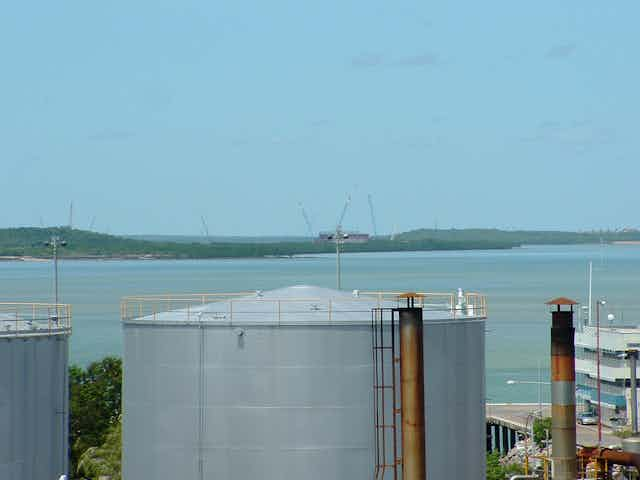What is the future of Australia’s gas reserves? While it might be good news for the gas industry, increasing international demand could see gas prices in Australia rise, driving up the cost of electricity.
Meanwhile increasing prices could drive us away from gas and back to coal, leading to a surge in carbon emissions.
One of the solutions is to reserve gas for domestic use, although this has proved unpalatable to the gas industry. But there are compelling reasons to consider gas reservation.
Increasing demand
The International Energy Agency forecasts that the 21st Century will be the “golden age of gas”. Demand is projected to increase by more than 50% from 2010 levels. In 2035, gas will account for 25% of the world’s energy demands. The Grattan Institute estimates that by 2017 Australia will have the largest gas export industry in the world, worth $53 billion a year.
Unconventional gas — such as coal seam gas and shale gas — will form a large part of this movement.
Increased demand is also driving an increase in trade. Gas is transported as LNG, a cooled liquid form that can be shipped via tankers anywhere in the world. This allows gas to be dramatically mobilised, leading to increased globalisation and the significant possibility that LNG will become a global commodity.
Globalisation is a complicated process, with the most significant hurdle being establishing a single price, especially given current variation.
There is no doubt that the east Australian gas market is experiencing a rapid transformation and it is unlikely that gas prices in the eastern market will return to lower prices of the past. Gas prices are expected to increase by a range of $2–6 per gigajoule, as new export plants develop in Queensland. Nearly $60 billion is being invested in the construction of three LNG plants in Gladstone, Queensland. These plants will commence exporting LNG from September 2014. This trend is likely to continue, with the market expected to triple by 2017 to meet export demand.
Most of this demand is being met by unconventional gas reserves in Queensland. With new regulatory and policy strategies for unconventional gas, New South Wales and Victoria may soon join as significant players.
China, Japan and Korea are driving demand, with mounting preference for cleaner energy alternatives to coal. In China one of the key policies is the recently announced Five-Year Plan for 2011-2015, aiming for more sustainably growth, energy efficiency and cleaner energy sources to reduce environmental impacts.
Should we reserve our gas?
Industry representative Business Council of Australia is extremely concerned about the effect of increasing exports on domestic gas prices, and the subsequent impact on industry.
Of particular concern are trade-exposed manufacturing industries that consume significant volumes of gas. It’s likely many operations won’t be able to afford gas if prices exceed A$10 a gigajoule.
Rising gas prices might also threaten Australia’s emissions reduction targets. If the cost of gas makes it uneconomic for gas to operate as a replacement electricity fuel for coal, despite its abundancy, coal fired energy emissions may not be reduced.
This is likely to have significant economic ramifications for the government. The bipartisan policy to reduce emissions by 5% by 2020 is going to be very difficult to achieve in the absence of significant cuts to other industries.
Gas reservation may be one of the solutions, but most Australian energy companies are rigorously opposed to domestic reservation.
Alternative options suggested by the industry are largely variations on a theme. These include: imposing specific obligations (possibly as license conditions), imposing a differentiated gas price for export and domestic users and reserving exploration areas specifically for domestic supply.
The Chairman of the BG Group, Catherine Tanna, recently indicated that energy companies may be prepared to accept some domestic reservation obligations provided governments release more acreage for mining exploration for unconventional gas development. This stalemate is yet to be resolved.
Lessons from the US
In the US, unlike Australia, significant export restrictions on domestic gas exist. The Natural Gas Act 1938 requires anyone who wants to import or export natural gas, including LNG from or to a foreign country to first obtain an authorisation from the Department of Energy.
This means that most large scale domestic gas production is targeted for domestic consumption. The Energy Institute of America has indicated that US net imports of natural gas have actually fallen over the past three years. This is largely due to significant growth in domestic production from shale gas formations.
This surge in production has led US companies to seek authorisation from the Department of Energy to lift restrictions and export shale gas.
In response industrial consumers of natural gas have formed an alliance to fight the possible loosening of export restrictions. The alliance includes utilities dependent on natural gas to fuel electricity generation, chemical companies that use it as a feedstock for making myriad industrial chemicals, and heavy industrial users such Alcoa and Nucor who use natural gas to fire their metal-making operations.
Meanwhile the Energy Information Administration has revised down estimates of shale gas reserves. Both industry opposition and reduced reserves make any loosening of export restrictions in the United States unlikely.
But in Australia the pace and scale of LNG production and demand is rising. In the absence of export restrictions, increasing demand will dramatically affect domestic gas prices. It’s now imperative that Australia consider gas reservation seriously, if we’re to properly distribute the benefits of the “golden age of gas”.

